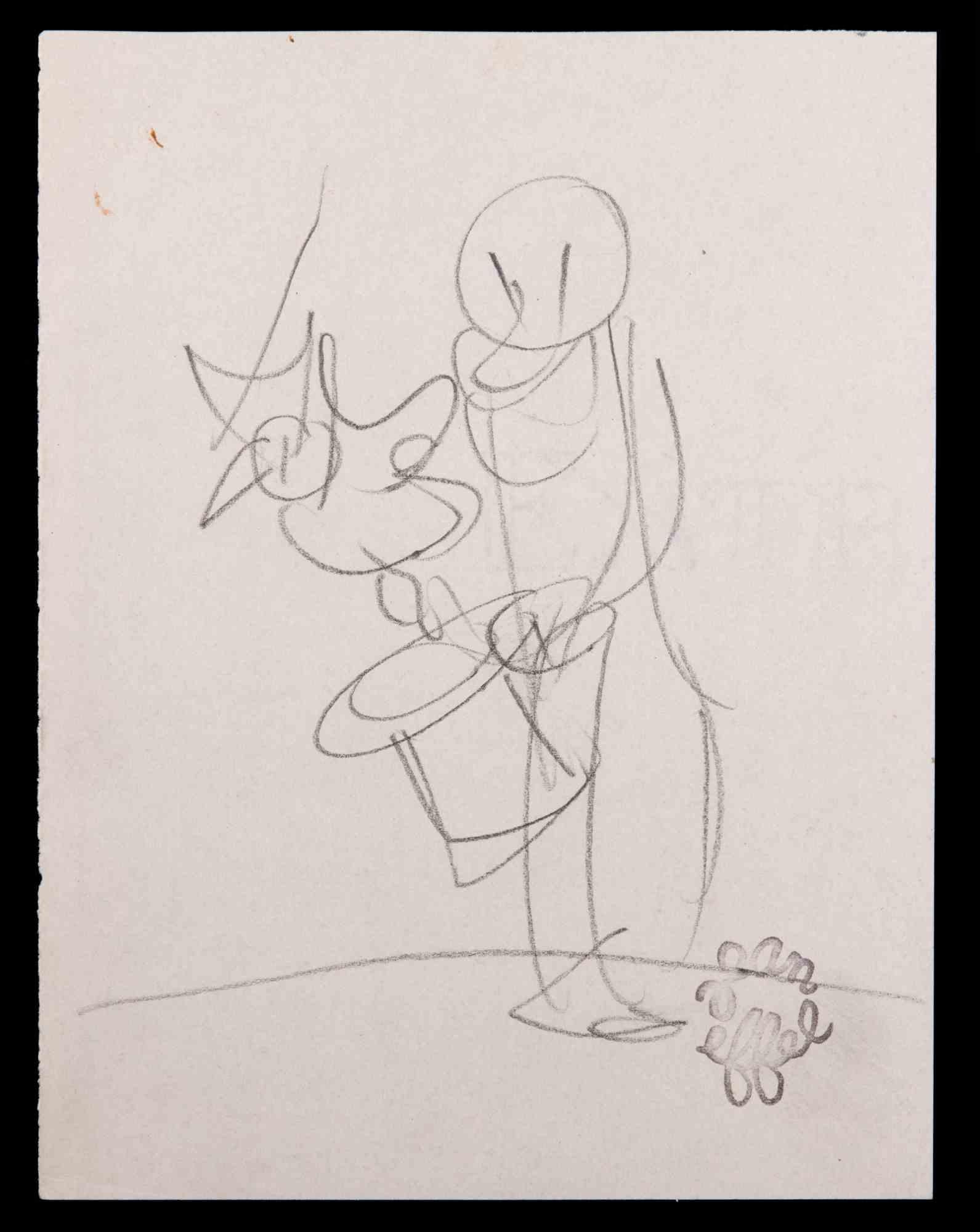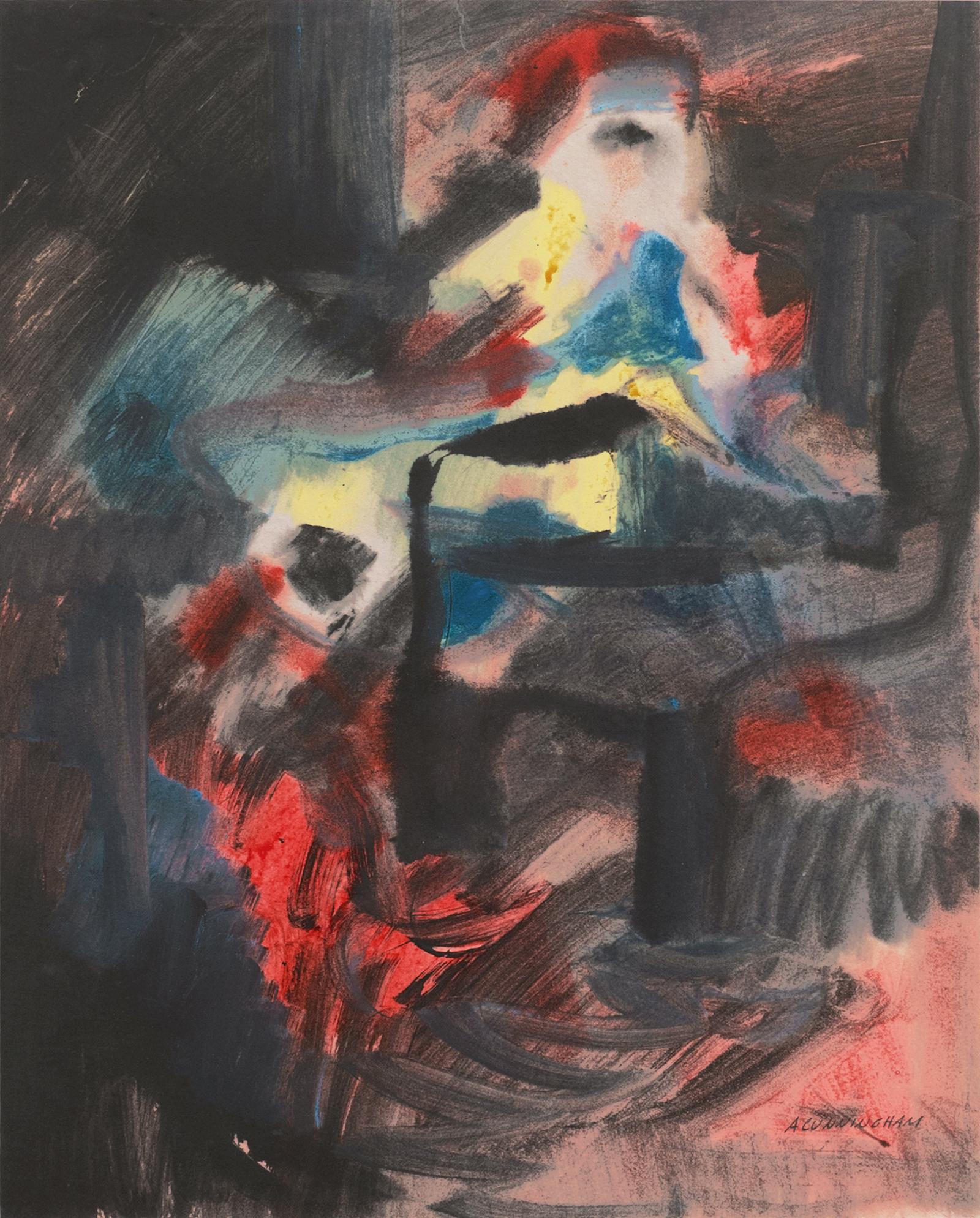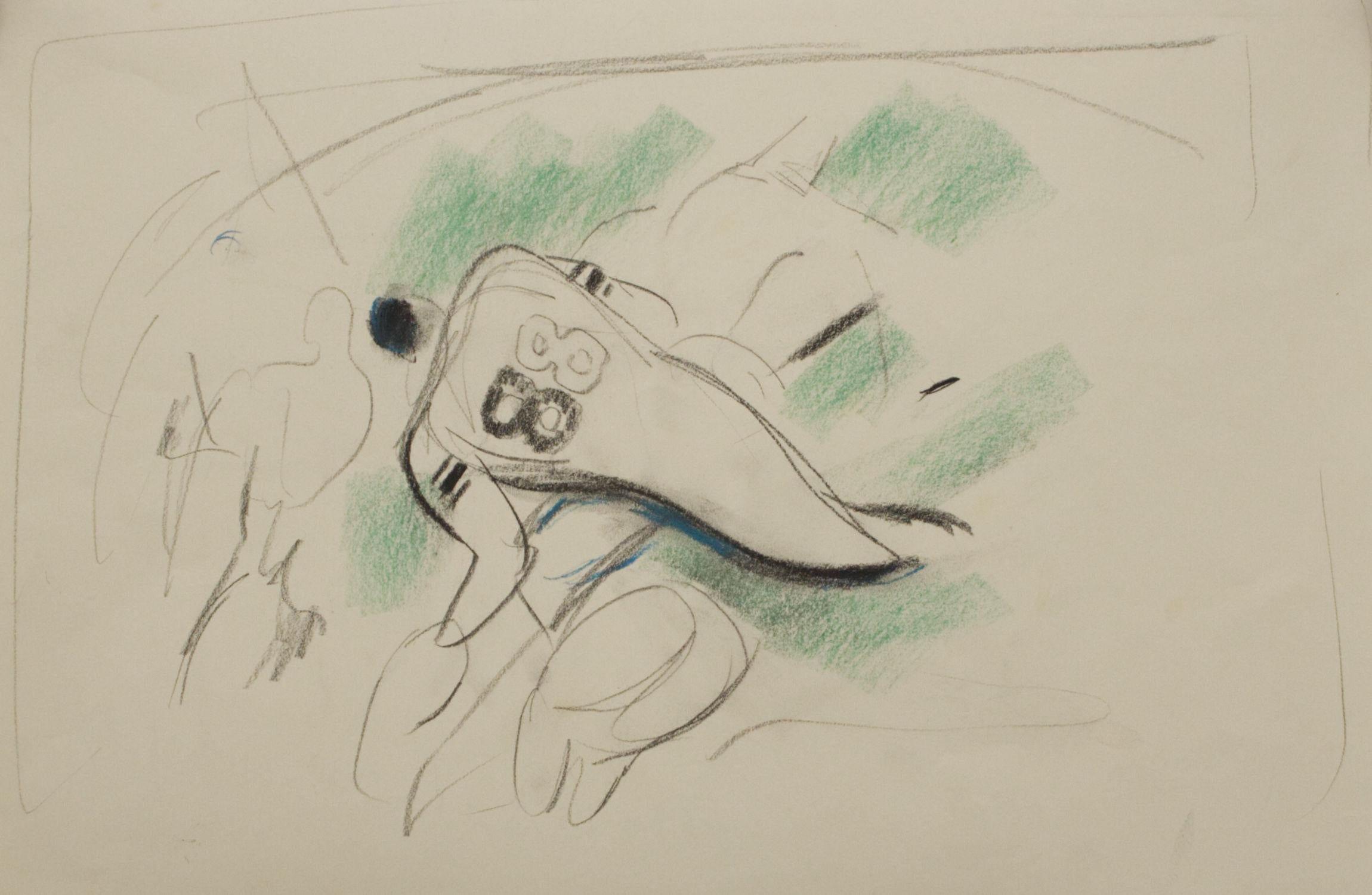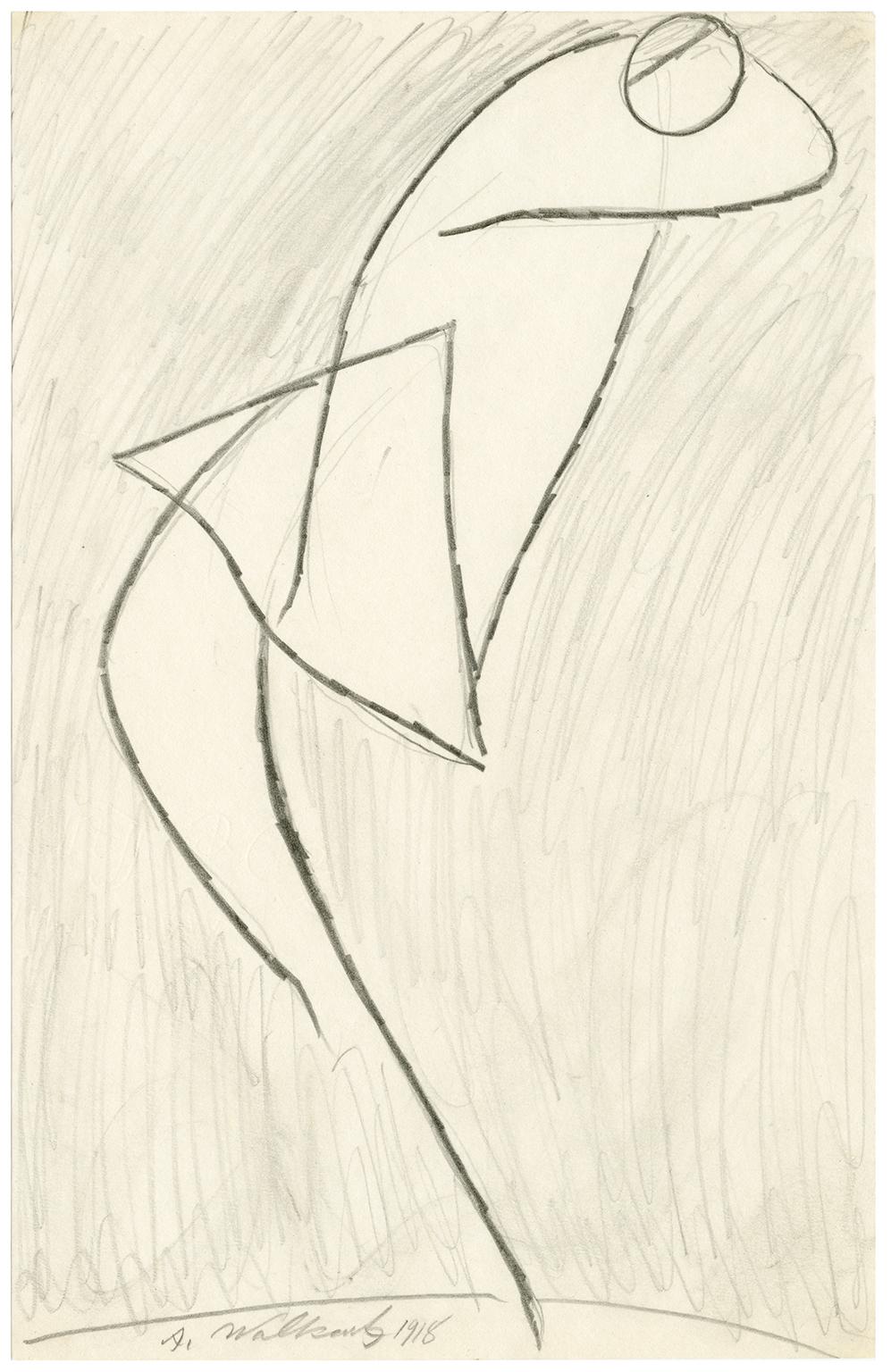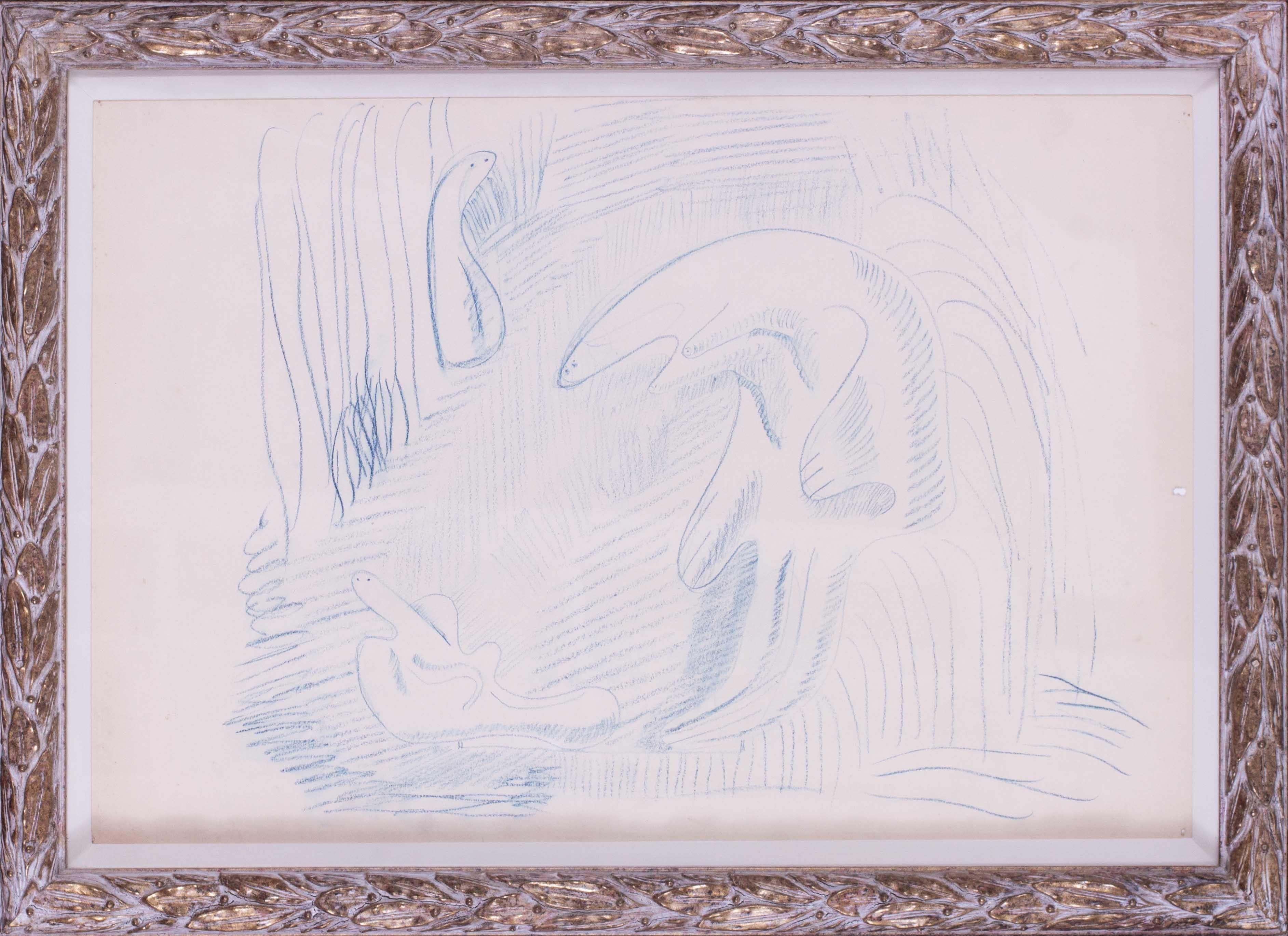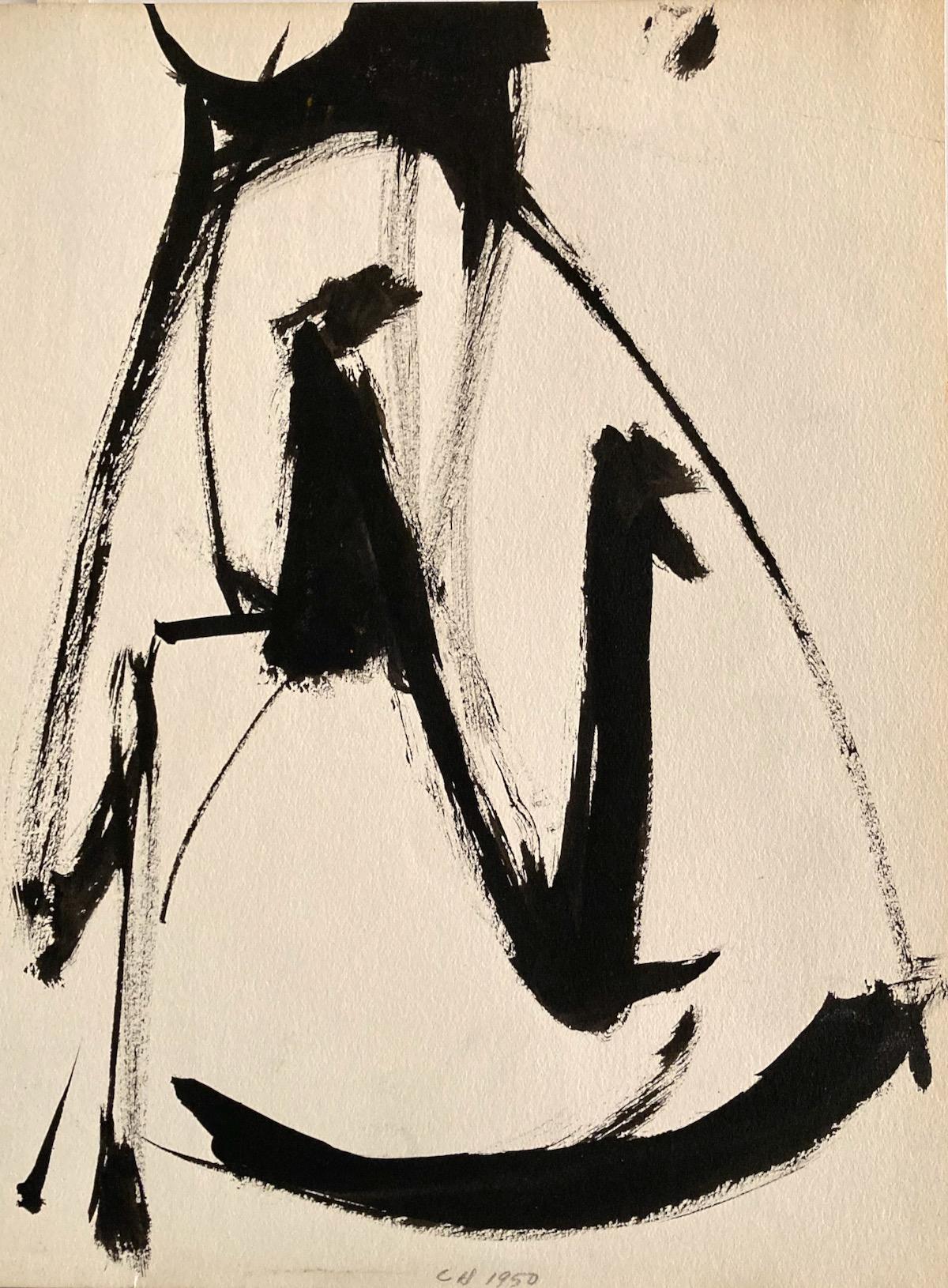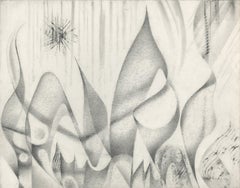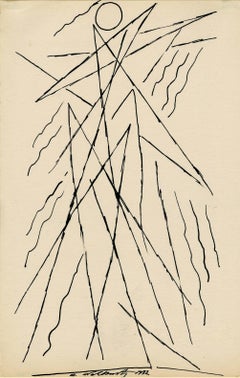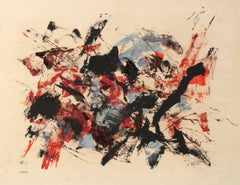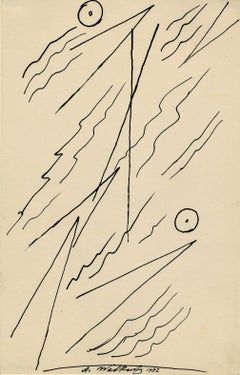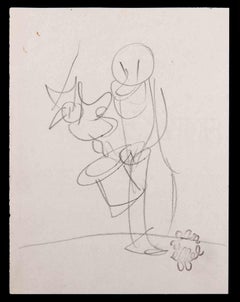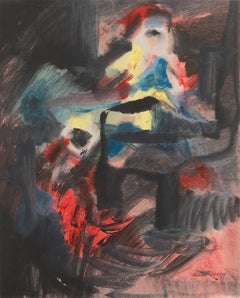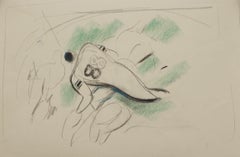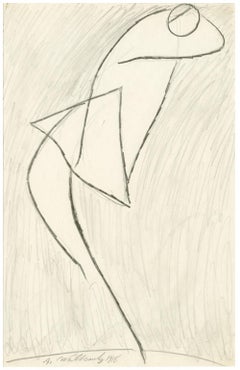Items Similar to Untitled (Wizard Fantasy)
Want more images or videos?
Request additional images or videos from the seller
1 of 17
Morris LouisUntitled (Wizard Fantasy)1948
1948
$17,000
£12,893.42
€14,808.60
CA$24,354.86
A$26,812.89
CHF 13,704.13
MX$320,019.13
NOK 174,482.81
SEK 163,277.01
DKK 110,611.63
About the Item
Untitled (Wizard Fantasy)
Pen and ink on paperboard, 1948
Signed and dated by the artist lower right
Extremely rare "Middle Period" drawing. One of two drawings that were given by the artist to Jeanette Kear, Chevy Chase, MD which were signed and dated by the artist. All others in the exhibition are from sketchbooks and have the estate stamp and numbering.
Exhibited at National Collection of Fine Arts, Smithsonian Institution, Dec. 6 1979-Feb. 3, 1980
and
Fogg Museum of Art, Harvard University, Feb. 22-April6, 1980
Illustrated twice in the resulting catalog, The Drawings of Morris Louis, by Diane Upright Headly, Harvard Univeristy and author of the catalog essay and entries. (See photos)
Condition: Mounted to paper board by owner, Jeanette Kear for framing
Glazed with glass
Image size: 13 7/8 x 16 5/8 inches
Frame size: 20 x 23 x 3/4 inches
Provenance: Jeanette F. Kear, Chevy Chase, MD
Illustrated: National Collection of Fine Art, 1979: "The Drawings of Morris Louis,"
Catalog No. 1, illustrated D1, reproduced p. 73
Morris Louis Bernstein (November 28, 1912 – September 7, 1962), known professionally as Morris Louis, was an American painter. During the 1950s he became one of the earliest exponents of Color Field painting. While living in Washington, D.C., Louis, along with Kenneth Noland and other Washington painters, formed an art movement that is known today as the Washington Color Schoo
Early life and education
From 1929 to 1933, he studied at the Maryland Institute of Fine and Applied Arts (now Maryland Institute College of Art) on a scholarship, but left shortly before completing the program. Louis worked at various odd jobs to support himself while painting, and in 1935 was president of the Baltimore Artists' Association. From 1936 to 1940, he lived in New York City and worked in the easel division of the Works Progress Administration Federal Art Project. During this period, he knew Arshile Gorky, David Alfaro Siqueiros, and Jack Tworkov. He also dropped his last name.
Work
Color field painting
He returned to his native Baltimore in 1940 and taught privately. In 1948, he pioneered the use of Magna paint—a newly developed oil-based acrylic paint made for him by his friends, New York paintmakers Leonard Bocour and Sam Golden. In 1952, Louis moved to Washington, D.C. Living in Washington, D.C., he was somewhat apart from the New York scene and he was working almost in isolation. During the 1950s he and a group of artists that included Kenneth Noland, Gene Davis, Thomas Downing, Howard Mehring, Anne Truitt and Hilda Thorpe among others were central to the development of Color Field painting. The basic point about Louis's work and that of other Color Field painters, sometimes known as the Washington Color School in contrast to most of the other new approaches of the late 1950s and early 1960s, is that they greatly simplified the idea of what constitutes the look of a finished painting. They continued in a tradition of painting exemplified by Jackson Pollock, Barnett Newman, Clyfford Still, Mark Rothko, Robert Motherwell, and Ad Reinhardt. Eliminating gestural, compositional drawing in favor of large areas of raw canvas, solid planes of thinned and fluid paint, utilizing an expressive and psychological use of flat, and intense color and allover, repetitive composition. One of Louis's most important series of Color Field paintings were his Unfurleds.
Stain painting
All of the Color Field artists were concerned with the classic problems of pictorial space and the flatness of the picture plane. In 1953, Louis and Noland visited Helen Frankenthaler's New York studio, where they saw and were greatly impressed by her stain paintings, especially Mountains and Sea (1952). Upon their return to Washington, Louis and Noland together experimented with various techniques of paint application. Louis characteristically applied extremely diluted, thinned paint to an unprimed, unstretched canvas, allowing it to flow over the inclined surface in effects sometimes suggestive of translucent color veils. The importance of Frankenthaler's example in Louis's development of this technique has been noted. Louis reported that he thought of Frankenthaler as the bridge between Jackson Pollock and the possible. However, even more so than Frankenthaler, Louis eliminated the brush gesture, although his flat, thin pigment is at times modulated in billowing and subtle tones.
In 1954, Louis produced his mature Veil Paintings, which were characterized by overlapping, superimposed layers of transparent color poured onto and stained into sized or unsized canvas.[6] The Veil Paintings consist of waves of brilliant, curving color-shapes submerged in translucent washes through which separate colors emerge principally at the edges. Although subdued, the resulting color is immensely rich. In another series, the artist used long parallel bands and stripes of pure color arranged side by side in rainbow effects. The painting Tet is a good example of his Veil Paintings.
The thinned acrylic paint was allowed to stain the canvas, making the pigment at one with the canvas as opposed to "on top". This conformed to Greenberg's conception of "Modernism" as it made the entire picture plane flat.
Late paintings
Louis destroyed many of his paintings between 1955 and 1957. He resumed work on the Veils in 1958–59. These were followed by Florals and Columns (1960), Alephs (1960), Unfurleds (1960–61)—in which rivulets of more opaque, intense color flow from both sides of large white fields of raw canvas—and finally the Stripe paintings (1961–62). Between summer 1960 and January/February 1961, he created about 150 Unfurleds, generally on mural-size canvases.
Exhibitions
A memorial exhibition of Louis' work was held at the Solomon R. Guggenheim Museum in 1963. Major Louis exhibitions were also organized by the Museum of Fine Arts, Boston, in 1967 and the National Gallery of Art, Washington, D.C., in 1976. In 1986 there was an important retrospective exhibition of his works at the Museum of Modern Art (MoMA) in New York. During 2007-2008 an important retrospective was held by museums in San Diego, at the Museum of Contemporary Art, in Atlanta at the High Museum, and in Washington, DC. at the Hirshhorn Museum and Sculpture Garden.
In 2024, both Beth Shin and Delta Eta, integrated Every Sound Is a Shape of Time: Selections from PAMM's Collection, at the Pérez Art Museum Miami. The show is curated by museum director and art historian, Franklin Sirmans.
Art market
In 2015, a striped canvas by Louis, Number 36 (1962), from the collection of Lord Anthony and Lady Evelyn Jacobs sold for £1.5 million at Christie's London.
Personal life
He married Marcella Siegel in 1947. She supported him throughout his career and in memory of him she supported one artist every year through the Morris Louis Fellowship at George Washington University.
Death
Morris Louis was diagnosed with lung cancer in 1962 and soon after died at his home in Washington, D.C., on September 7, 1962. The cause of his illness was attributed to prolonged exposure to paint vapours. The Estate of Morris Louis is represented exclusively by Diane Upright, a former professor of fine art at Harvard University.
Courtesy Wikipedia
- Creator:Morris Louis (1912 - 1962)
- Creation Year:1948
- Dimensions:Height: 13.88 in (35.26 cm)Width: 16.63 in (42.25 cm)
- Medium:
- Movement & Style:
- Period:
- Condition:
- Gallery Location:Fairlawn, OH
- Reference Number:Seller: FA60331stDibs: LU14015882612
About the Seller
5.0
Recognized Seller
These prestigious sellers are industry leaders and represent the highest echelon for item quality and design.
Platinum Seller
Premium sellers with a 4.7+ rating and 24-hour response times
Established in 1978
1stDibs seller since 2013
815 sales on 1stDibs
Typical response time: <1 hour
Associations
International Fine Print Dealers Association
- ShippingRetrieving quote...Shipping from: Akron, OH
- Return Policy
Authenticity Guarantee
In the unlikely event there’s an issue with an item’s authenticity, contact us within 1 year for a full refund. DetailsMoney-Back Guarantee
If your item is not as described, is damaged in transit, or does not arrive, contact us within 7 days for a full refund. Details24-Hour Cancellation
You have a 24-hour grace period in which to reconsider your purchase, with no questions asked.Vetted Professional Sellers
Our world-class sellers must adhere to strict standards for service and quality, maintaining the integrity of our listings.Price-Match Guarantee
If you find that a seller listed the same item for a lower price elsewhere, we’ll match it.Trusted Global Delivery
Our best-in-class carrier network provides specialized shipping options worldwide, including custom delivery.More From This Seller
View AllUntitled Abstraction
By Medard P. Klein
Located in Fairlawn, OH
Untitled Abstraction
Graphite on paper, c. 1946
Signed with the estate stamp verso
Provenance: estate of the Artist
Inherited by his neighbor/caregiver
Conditio...
Category
1940s Abstract Abstract Drawings and Watercolors
Materials
Graphite
Abstraction
By Abraham Walkowitz
Located in Fairlawn, OH
Signed and dated in ink lower center
Provenance:
Charlotte Bergman, noted collector and patron of Walkowitz. See photo for additional information.
Category
1930s Modern Abstract Drawings and Watercolors
Materials
Ink, Pen
Untitled Abstraction
By John von Wicht
Located in Fairlawn, OH
Untitled Abstrraction
Gouache, watercolor and pigments on paper, c. 1960
Signed lower right in pencil (see photo)
Image: 17 x 22 inches
Sheet: 25 1/4 x 29 3/4 inches
Frame: 25 1/4 x ...
Category
1960s Abstract Expressionist Abstract Drawings and Watercolors
Materials
Watercolor
Abstraction
By Abraham Walkowitz
Located in Fairlawn, OH
Untitled Abstraction
Pen and ink on paper, 1932
Signed and dated in ink lower center
Condition: Excellent
Sheet/Image size: 10 3/8 x 6 1/4 inches
Frame size: 16 1/2 x 12 1/2"
Provena...
Category
1930s Abstract Geometric Abstract Drawings and Watercolors
Materials
Ink, Pen
Untitled Abstraction
By Medard P. Klein
Located in Fairlawn, OH
Untitled Abstraction
Graphite on paper, c. 1950
Unsigned
Signed with the estate stamp verso (see photo)
Provenance: Estate of the artist
Inherited by his neighb...
Category
1950s Abstract Abstract Drawings and Watercolors
Materials
Graphite
Untitled
By Fannie Hillsmith
Located in Fairlawn, OH
Untitled
Collage and crayon drawing, 1967
Signed and dated lower center (see photo)
Condition: Small imperfections from the creative process
Small tear on the left sheet edge (repai...
Category
1960s Abstract Abstract Drawings and Watercolors
Materials
Crayon
You May Also Like
The Magician - Original Drawing by Jean Effel - Mid-20th Century
Located in Roma, IT
The Magician is an original drawing pencil on paper realized by Jean Effel (1908-1982) in the mid-20th Century. Stamp signed on the lower right.
The Person...
Category
Mid-20th Century Modern Figurative Drawings and Watercolors
Materials
Pencil
'Abstract', Marin, Watercolor Artists of San Francisco, De Young Museum
Located in Santa Cruz, CA
Signed lower right, 'A. Cunningham' for Alfred A Cunningham (American, 20th century) and painted circa 1965.
Alfred Cunningham was active in Northern California from the 1950's thro...
Category
1960s Abstract Drawings and Watercolors
Materials
Paper, Gouache
A ca. 1954, drawing of a Notre Dame Football Game by Artist Francis Chapin
By Francis Chapin
Located in Chicago, IL
A ca. 1954 pastel & charcoal on paper drawing of a Notre Dame football game by artist Francis Chapin. Artwork size: 12" x 19". Archivally matted ...
Category
1950s American Modern Figurative Drawings and Watercolors
Materials
Paper, Charcoal, Pastel
Untitled (Figurative Abstraction of Isadora Duncan #7)
By Abraham Walkowitz
Located in Myrtle Beach, SC
Abraham Walkowitz, Untitled (Figurative Abstraction of Isadora Duncan #7), pencil, 1918. Signed and dated in pencil, bottom center. A fine, spon...
Category
1910s American Modern Figurative Drawings and Watercolors
Materials
Pencil
Modern British drawing of abstract figures by Arthur Berridge, 1950
Located in Petworth, West Sussex
Arthur Berridge (British, 1902-1957)
Abstracted figures #2 1950
Blue crayon
14.1/2 x 21.1/2 in. (36.8 x 54.7 cm.)
Provenance: David Lay, Penzance
Born in Leicester in 1902, Ber...
Category
20th Century Abstract Abstract Drawings and Watercolors
Materials
Charcoal
Clinton Hill, (Nude #2), 1950, drawing, figure/abstraction
By Clinton Hill
Located in New York, NY
Clinton Hill (1922-2003), created quintessential mid-century images, but figures are unusual in his work. This is from a very early period. From 1949 to 1951 he attended the Brooklyn...
Category
Mid-20th Century American Modern Landscape Drawings and Watercolors
Materials
Gouache
